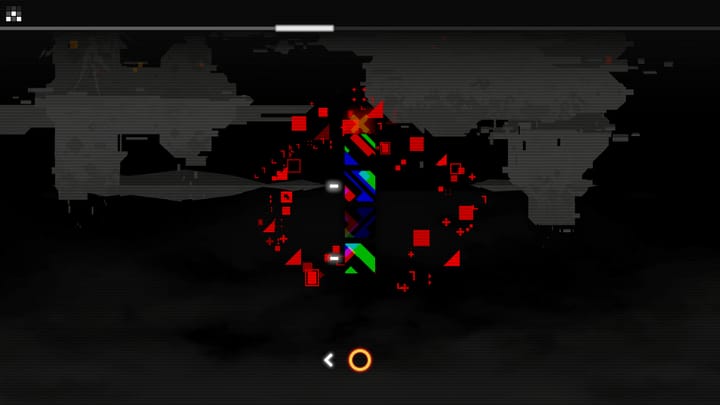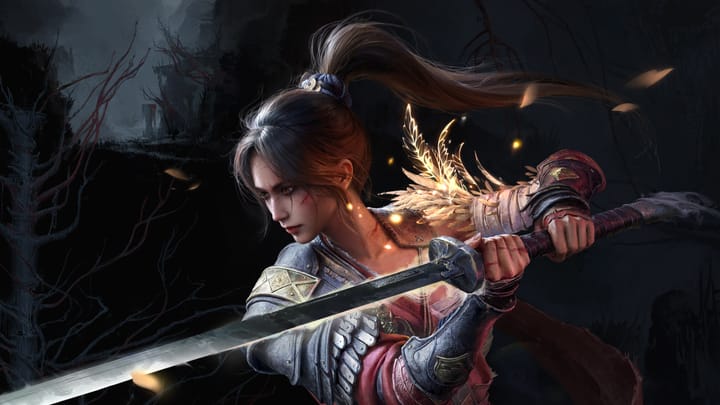Charming style, delightfully revelatory puzzles and one of the best executions of slowly revealing key mechanics to its players. Developer Nama Takahashi has done it yet again: Öoo is pure, puzzle-platforming bliss.
I still remember that first time, just over four years ago, I came upon developer Nama Takahashi and his then-upcoming curious little puzzle-platformer by the name of ElecHead. A fairly novel and somewhat unexpected surprise upon being invited to a sneak peak of what was in store. Whereupon I was greeted not by some lavish, flashy full-screen outing. But rather, something a little more compact; barely filling my monitor upon boot-up, I'm met with a visually-minimal colour palette confined mostly to a steely-blue and occasional activity of glowing orange.
What quickly followed was the kind of revelation in game design, I remain hungry and strident to find across a slew of genres, let alone puzzle games. That Takahashi could convey such a diverse range of puzzles the game ended up offering, with so intentionally-restricted a palette. And succeed so brilliantly on top. ElecHead was as delightful as it was insightful – mastering the art of subtle guidance, all while making sure players were left to deduce at their own inherent pace, the solution to the next puzzle. To then apply those same deductions to what eventually followed – capping off with the kind of grand finale reveal you can't help but smile at.
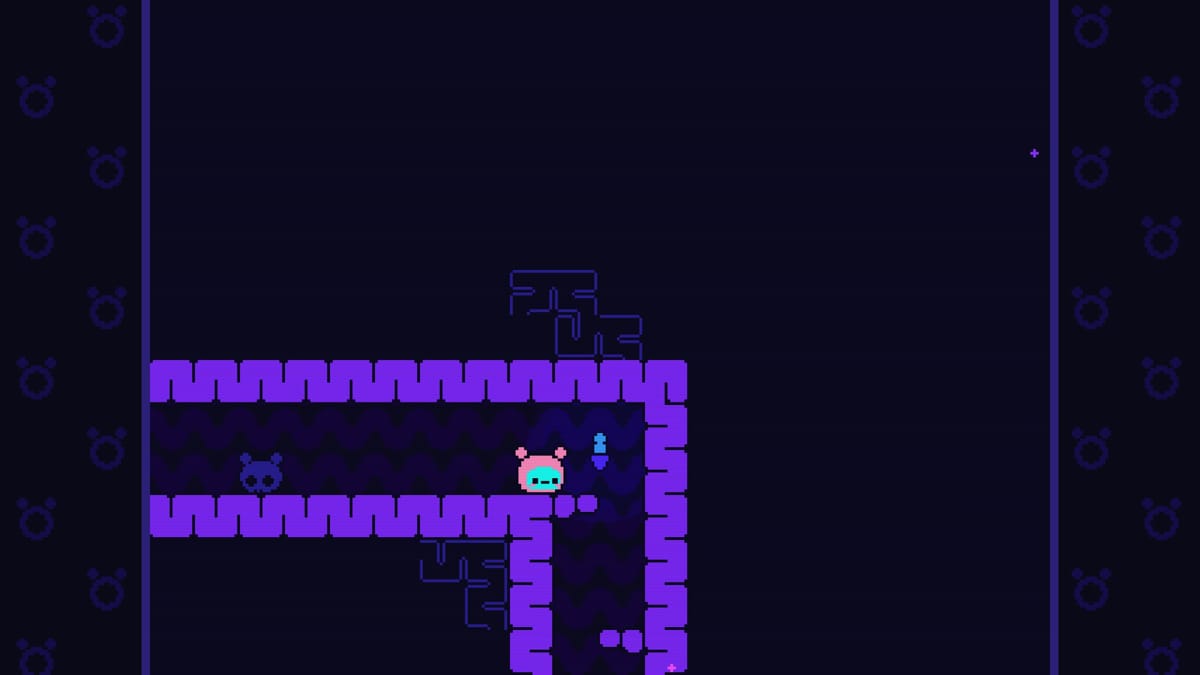
"You can't help but smile at..." might as well be this write-up's sub-title. Or perhaps more apt: perfectly surmise the defining reaction at just how consistently joyous and ingenious Takahashi's follow-up, Öoo, truly is. A game clocking in at just over two hours to complete – not unlike the developer's previous work – but housing arguably some of the most shockingly-pungent moments of penny-drop realizations. Realizations not only with how a given puzzle can be solved, but again in Öoo's general design.
How Takahashi, with what seems like perfect foresight and calculated presumption, guesses correctly (again and again) on the exact time and place players will, for example, check the map, or return to a given room in the pursuit of any sort of clue on how to progress. A seemingly-impassable conundrum given clarity...without a single, solitary word or prompt being offered. Yet none of this feels manipulative, which is perhaps the most surprising detail of Takahashi's approach to teaching players the extent to which abilities can be utilized.
Because it's in that measured and gradual progression of ideas, that Öoo's grandest reveal is made even more palpable: all the skills you employ throughout one's venture, were there from the very start. The mechanics crucial to the late-game puzzles? You could do that from the get-go. Again, Öoo's charm, beyond its minimalist structure and swapping out of one prime colour for another, lies in its ability to take such a simple concept and flesh it out. In ways that in hindsight seem obvious, but at the time, come across like one has just witnessed blasphemous magic in action.
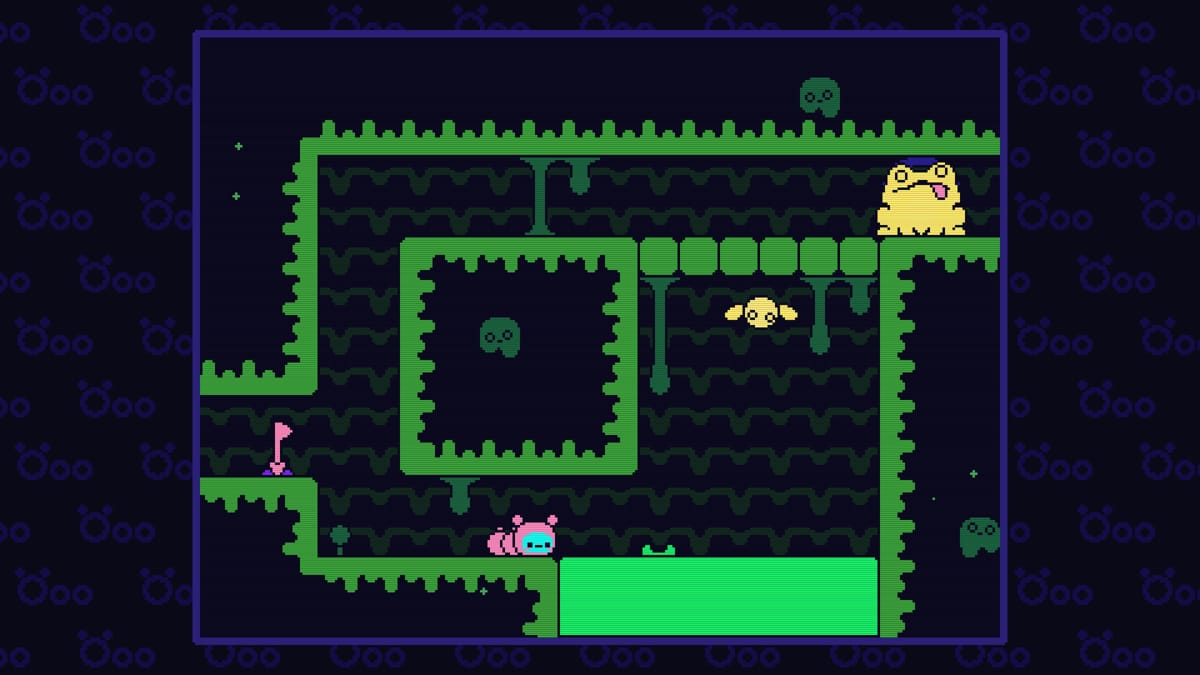
Taking control of a small pink, round-headed creature, you soon come into acquisition of a bomb that upon use, simply respawns behind you to be used again and again. The trick then is in how to take advantage of said bomb. Not just through its obvious explosive properties, but as it's quickly revealed, how said explosive force can translate into momentum – employed to, for example, traverse a given space. Place a bomb to your right and the explosion will cause your character to fly left. Have your character placed on top of said bomb and that momentum will carry you upward.
The general puzzle-solving loop quickly becomes a little more involved, when the need to feed route-blocking yellow frogs serves as the main objective. Requiring you to get to and subsequently lead flying yellow creatures (some immediately visible, others hidden behind destructible parts of the level) to their targets. A task which, again, grows in complexity due to the game's ample checkpoints also serving as similarly-predatory creatures ready to gobble up their prey should you get too close.
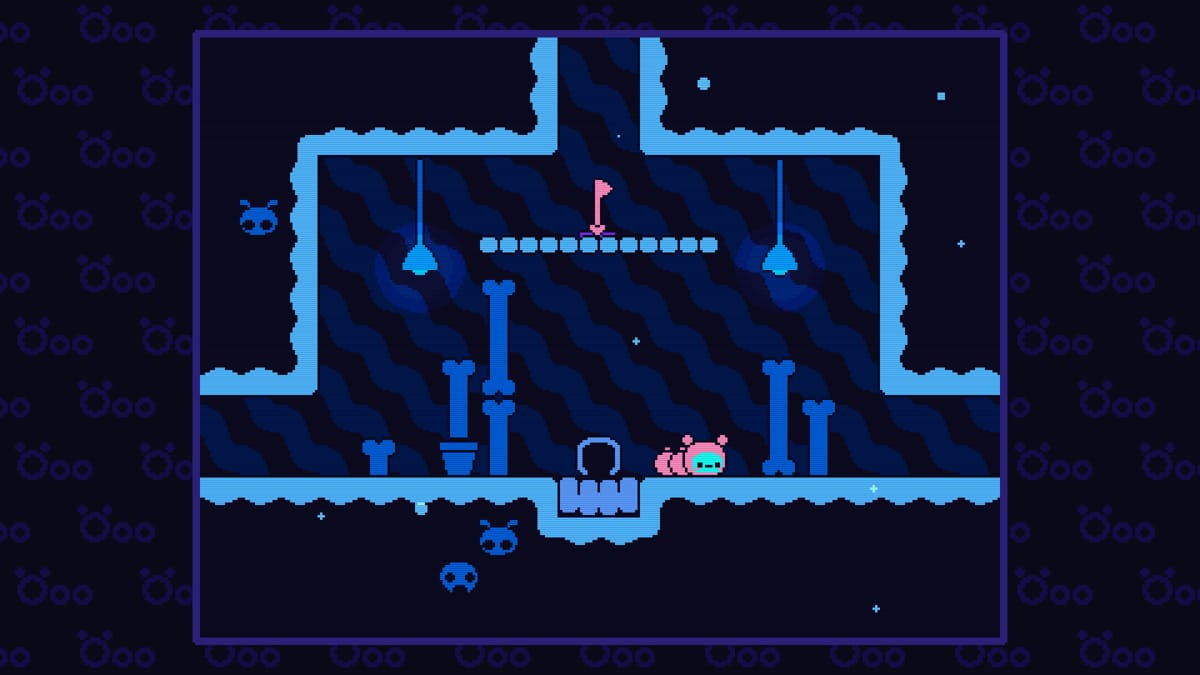
Despite the simplicity in description this might imply, Öoo does an excellent job at consistently tasking its players with increasingly more challenging conundrums. Mixing up the formula or narrowing the window of success even tighter, as a means for players to prove they've got a handle on the game's controls. Later on, through the addition of a second bomb, orchestrating scenarios that require not just a firm understanding of said abilities, but quick timing too in an attempt to combo a required set of moves one after the other.
Without spoiling too much of the game's latter-half revelations, Öoo is at its best during those moments of shock revelation. The "wait, I could do that this whole time?!" rhetoric one will no doubt express, upon coming face to face with another one of the game's flaunting momentum and positioning as gameplay mechanics themselves. A reveal which, as noted, hasn't so much been integrated, but instead been acknowledged to have been present this whole time.
But even if one were to take away that aspect, Öoo again – much like ElecHead – succeeds at walking that fine line when it comes to just how much it's willing to give away, as to its puzzle solutions. A game of wordless interaction, but offering enough visual cues – sometimes in the most unexpected ways – to make its seemingly-implausible methods, anything but.
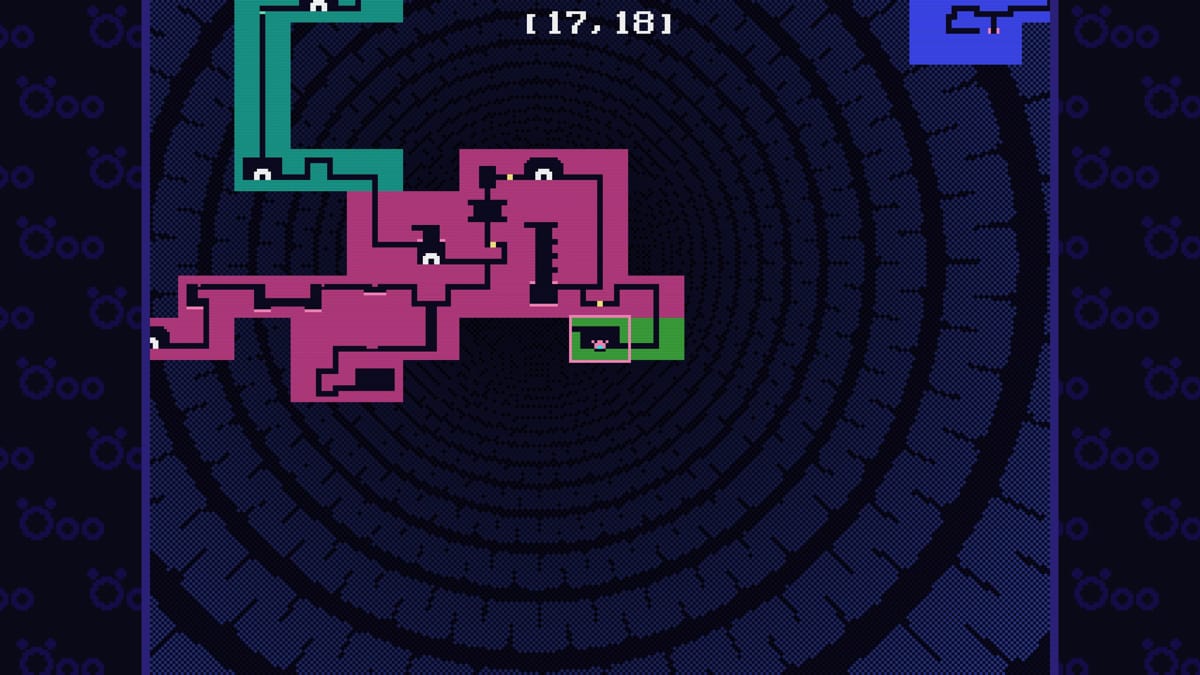
It's because Öoo relies so commendably on the power of visuals, on top of its trust with player intuition, that grants the somewhat simplistic structure of its environments, to feel that bit more cunning and gleefully deceptive. That every stand-alone room, may or may not, be hiding some added context to some grander/successive puzzle. Context that, upon reveal, is done so without words or even grandiose spectacle.
Right up to the game's climax that has you retrace one's steps – again, at a glance, a seemingly impassable ordeal – but through a combination of one's knowledge as well as the relative relationship between how each room is shaped, completely flips the rule-book on its head. The linear becoming non-linear, without so much as a single pixel being altered. Perhaps it's only because the emotional response to such revelations with its mechanics, is so strong, that this is where Öoo's only real gripe, sadly surfaces.
Admittedly, a criticism born from more personal desires/expectations not met, rather than some core failing on the game's behalf. That being the aforementioned climax to the game and the extent to which the figurative pulling back the curtain feels somewhat lesser in impact this time round, compared to Takahashi's previous title. The way ElecHead utilized more effectively that notion of revealing a game world's true nature/structure, felt way more charmingly profound. And while Öoo does implement some manner of peeling back layers to reveal a game's "true form" of sorts, the execution and immediate response does feel lesser this time round.

As lofty in expectations one might've been at the prospect of a follow-up to ElecHead, it's telling when a game like Öoo still manages to exceed them in ways both profound and shockingly unexpected. How Nama Takahashi's talents with curation and cleverly sequencing puzzles via world design, feel bolstered even further here. All while able to pin-point the exact moment players will look to such things like the game's map, previous rooms and other such visual aspects, as a means to teach and suggest what can be possible. Yet never coming off manipulative because of such methods. Despite its short run-time, Öoo is a profound piece of game design. A puzzle-platformer of impeccable timing and many a wide grin formed.





